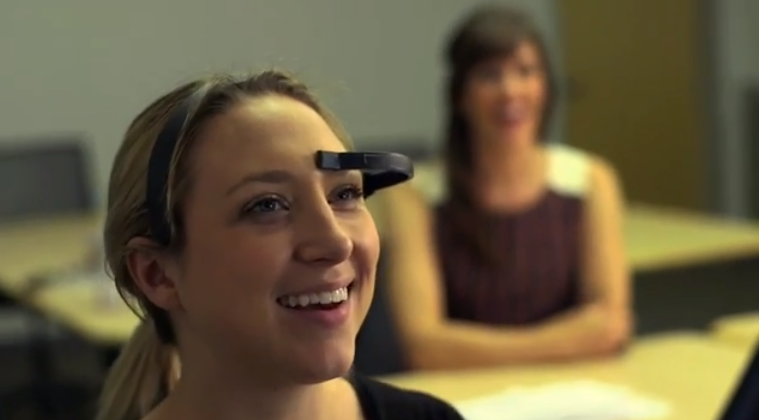Rovi Team Experiments with Brainwaves Project to Control TV
January 13, 2014
Through its cloud-based platform, Rovi powers digital entertainment solutions in discovery and personalization for leading brands. A small band of dreamers at Rovi demonstrated an experimental project at the guide makers exhibit at Caesar’s Palace during CES. Using a headset that monitors both brainwaves and nearby nerve activity, after a short training period it was possible to go from watching TV to the guide with a literal blink of the eyes, and then select a new program with a bit of concentration on the guide.
The inventors, Mike Nichols and Walt Klappert (pictured below), worked with Camron Shimy, software development manager, to create software for a repurposed headset that delivers what most people asked for when polled about navigating a program guide: “I’d like it to read my mind.”
“Many people know Rovi for our guidance technology,” explains Nichols in a 3-minute video overview of the Brainwaves project. “We’ve been working with partners to try to develop new techniques such as voice and motion recognition to change the television navigation experience.”
The video notes that the team set out to determine how they could improve upon the experience. “This constant theme kept coming up,” Klappert says. “It’s going to read my mind… My TV set’s going to read my mind.”
That’s exactly what the group at Rovi is working on.
“If you think about somebody who does not have the ability to pick up a remote control or who has trouble speaking,” notes Shimy, “they know what they want; it’s in their head.”
Making the sea of sensors that are soon to surround us actually offer up something magical from the Internet of Things is one of the challenges of this next phase of the Web.
Check out the Rovi video to catch a glimpse of this experiment. With more sensors showing up in all our devices and spaces, hopefully this will grow to maturity at an upcoming CES.
In related news, Rovi announced that it is offering new functionality to digital transport adapters (DTAs) with the launch in early 2014 of video guides that can run on SD and HD versions of one-way digital-to-analog channel zappers.
“DTAs have become an important tool for MSOs as they trim down or eliminate their analog video tiers and reclaim that spectrum for use towards more linear digital TV, video-on-demand and channels that can be applied to their DOCSIS 3.0-powered broadband platforms. Comcast, for example, has leaned heavily on DTAs for Project Cavalry, its all-digital initiative,” reports Broadcasting & Cable.
“The vendor said the Rovi DTA Guide allows tuning directly from the program grid, supports parental controls, and allows users to set language options.”



No Comments Yet
You can be the first to comment!
Leave a comment
You must be logged in to post a comment.